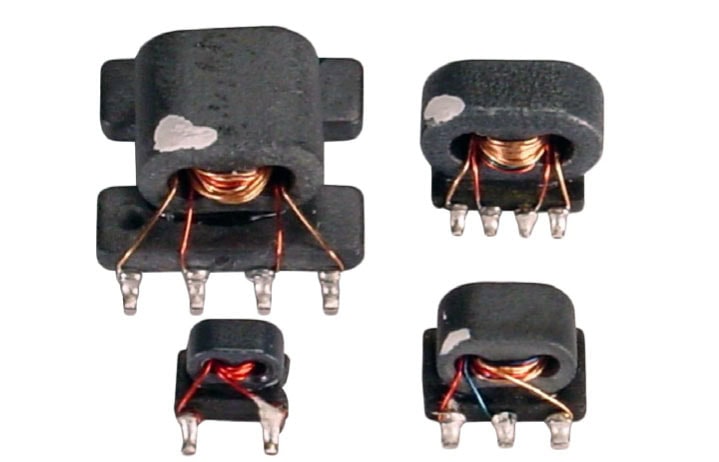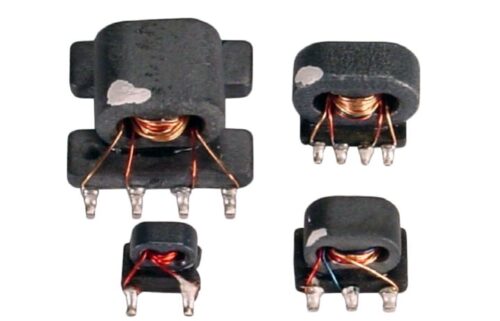Baluns and RF transformers are two distinct types of transformers – while they share similarities, they have many key differences in terms of operational functions and characteristics. In this blog, we’ll overview these two transformer types and their distinctions.
Balun Transformers
Balun transformers are used to convert an unbalanced signal to a balanced signal and vice versa. Commonly used in telephone lines, transmitters, and more, baluns optimize the flow of AC signals and transform impedance between coaxial cable and balanced loads.
RF Transformers
RF transformers are used to match impedances, isolate DC currents between circuits, and perform current or voltage step-up or step-down.
What’s the Difference Between Balun and RF Transformers?
Baluns and RF transformers have many overlapping functions, properties, and fabrication methods. Some baluns can even be considered modified RF transformers. Although they can be easily mismatched, each of these transformers have unique characteristics and purposes that differentiate them. Baluns and RF transformers work to optimize interactions between circuits and signals; however, they operate in different ways to do so.
Baluns convert an unbalanced signal to a balanced signal, and they are commonly used in communications applications to allow for the best possible transmission. A balanced line, or signal pathway, needs two 180° out-of-phase signals within a transmission pathway, while unbalanced pathways consist of a single signal with a ground plane return path. One way to fabricate baluns is by properly configuring one grounded and one floating winding-based transformer with a delay line.
RF transformers, on the other hand, use magnetic couplings between two or more circuits to isolate or transform current, voltage, or impedance amongst the coupled circuits. Commonly used in high frequency signal applications, RF transformers are typically composed of twisted-pair or coaxial transmission lines wound around a toroidal ferromagnetic core. However, they are also available in thin-film, thick-film, and planar varieties.
Balun Transformers and RF Transformers at MPS Industries
At MPS Industries, we specialize in high-quality magnetic components, including balun and RF transformers. Our products can withstand operating temperatures ranging from -40°C to 85°C and can handle frequencies ranging from 0.5 MHz to 2400 MHz. Our baluns and RF transformers are ideal for a variety of applications, including CATV, SET top boxes, and more. As optimal safety and performance are top priorities for our products and services, MPS upholds the following certifications:
- ISO 9001:2015
- ISO 14001:2015
- RoHS Compliance Statement (can be non-ROHS if required)
- REACH (Certificate of Compliance for specific products provided upon request)
- Conflict Minerals Compliance Statement
- ITAR Registered
- Joint Certification Program (JCP)
MPS serves multiple industries, including aerospace, automotive, consumer electronics, medical, military and defense, telecommunications, and more. We ensure optimal quality management, compliance with industry standards, and on-time delivery.
Request a Quote or Contact Us
To learn more about our baluns and RF transformers, browse our catalog today.
For questions regarding our products and services, reach out to our team and we’ll be happy to help.


